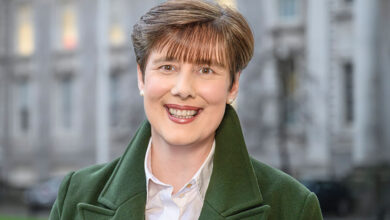 “Rankings can never capture the full contribution of this university. The standard line is they don’t matter – but they do.”
“Rankings can never capture the full contribution of this university. The standard line is they don’t matter – but they do.”
That is the opinion of Dr Hugh Brady, President of University College Dublin (UCD), which has for the first time made it onto the world’s top 100 universities.
“International students and international staff look at rankings. When I was in China they knew exactly where we are and what we are good at. World rankings are still consistently cited as one of the top
10 reasons why multi-nationals choose where they are going to locate,” Brady added.
This year, Trinity College Dublin (TCD) was placed at number 43 in the world and UCD was placed at number 89. Four years ago UCD had been at 221st place.
TCD provost Dr John Hegarty said: “Our ambition was to be at the front rank of world universities and among the top
50 globally. We have achieved that in a relatively short period of time and this year’s ranking of 43rd has surpassed that original goal.”
The Times Higher Education World University Rankings decide on the position of universities across the globe by carrying out extensive surveys based on the ‘four pillars’ they say are an example of a leading institution. These are high-quality research, high-quality teaching, international outlook and high graduate employability.
High quality research – 20 per cent of overall score
The Times Higher Education team examine how many times an academic’s published work is cited. They do this by taking the total number of citations for all papers published from the institution and dividing the figure by the number of full-time equivalent staff at the institution.
 High quality teaching – 20 per cent of overall score
High quality teaching – 20 per cent of overall score
Teaching excellence is measured through staff-to-student ratio based on data collected for all institutions, often via national bodies, and compared fairly.
International outlook – 10 per cent of overall score
The team measures the proportion of overseas staff a university has on its books. This makes up five per cent of the total score. Analysis of the proportion of international students it has attracted makes up another five per cent.
“This gives an impression of how attractive an institution is around the world, and suggests how much the institution has embraced the globalisation agenda,” a Times spokesman explained.
High graduate employability – 50 per cent of overall score
This is made up from qualitative data gathered by surveys of informed people such as university academics and graduate employers.
The team consults academics around the world, from lecturers to university presidents, and asks them to name up to 30 institutions they regard as being the best in the world in their field.
“For our 2009 tables, we have drawn on responses from 9,386 people. With each person nominating an average of 13 institutions, this means that we can draw on about 120,000 data points. The ranking also includes the results of an employer survey of 3,281 major graduate employers,” the spokesman conculded.





